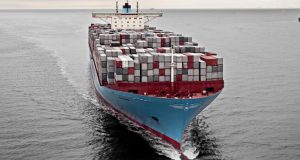The container shipping trade will mark positive growth numbers alongside most months of 2017, however, as long as carriers maintain the current capacity levels spot rates should see small, incremental increases, according to shipping consultancy Drewry.
Growth is returning to the Asia-East Coast South America (ECSA) trade due to favourable comparisons, but container traffic remains a long way off pre-2015 numbers as spot rates are holding steady with capacity settled.
Despite a lengthy economic downturn, continued foreign investment, particularly in Brazil, has strengthened the Brazilian Real currency and boosted the country’s purchasing power. Meanwhile, southbound container flows returned positive year-on-year growth rates in each of the last three months of 2016, something that was achieved in only two of the previous 28 months.
December was a particularly strong month with southbound volumes to Brazil rising by 24% year-on-year, Drewry cited Datamar statistics. The return of volume growth in the fourth quarter merely limited the damage to the annual southbound flows to -16%. The trade has not seen any annual growth since 2013 and last year’s decline follows drops of 9% in 2015 and 1.5% in 2014, meaning that 2016’s southbound volumes “were barely three-quarters of the level they were in 2013.”
Despite improving in the second half of the year, it was the Asia to Brazil market that declined the most in 2016, falling by 21% to 770,000 TEU. Volumes from Asia to the Plate region of Argentina and Uruguay fell by 3.5% to 390,000 TEU to give it one-third of the total market, up from the one-quarter share it had from 2012-14.
Capacity on the trade has been relatively stable ever since the rationalisation in late 2015/early 2016 that resulted in only three weekly services left standing. Today the remaining carriers tend to adjust capacity via the occasional missed/void sailing, which can have a significant impact on ship utilisation.
The trade operated at full capacity in the final two months of 2016 but carriers resorted to two void sailings in January, which helped push the annual comparison down to -25%.
“Forward schedules indicate that there were another two void sailings in February to coincide with the Chinese New Year lull, but that by March the trade will once again be firing on all cylinders,” Drewry said.
